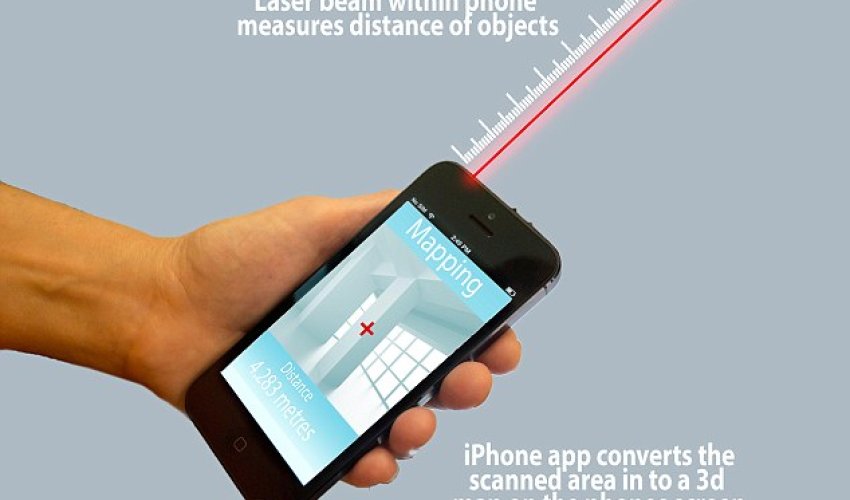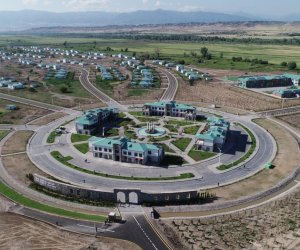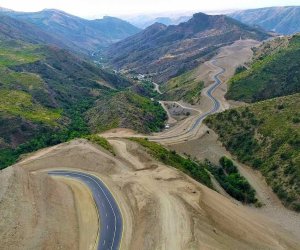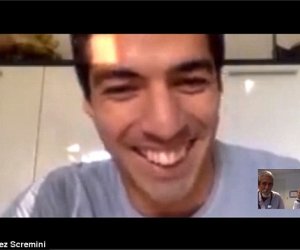Apple is developing an iPhone that fires LASER BEAMS

It's a gadget that sounds like it is straight out of a James Bond movie - an iPhone that fires lasers.
But Apple are developing a new laser-based system for future generations of its iPhone devices.
Rather than cutting through handcuffs and walls like devices designed for 007, however, Apple is planning to use the feature to enable its phones to map their surroundings.
The laser would be mounted inside the iPhone and used together with the inbuilt motion sensors to generate a map of any surface it is pointed at.
An iPhone-mounted sensor would detect any light bounced back to the device and provide information about the surfaces of objects around it.
This would allow the iPhone to be used to measure distance and create 3D maps of rooms and even buildings - something that currently requires bulky equipment.
Designs for the iPhone laser were revealed in a US patent application submitted by Apple.
It raises the prospect of being able to connect future generations of the iPhone to 3D printers so users can replicate their favourite objects or important components.
Apple claims the laser technology could be incorporated into other handheld devices such as iPads, laptops and even wearable technology like its new Apple Watch.
Writing in the patent, Apple said: 'Conventional laser measuring devices measure only the distance from the device to a given surface.
'These devices are unable to measure distances between multiple points that are separate from the device and therefore require the user to place the device is specific locations for which measurements are desired.
'This can be difficult in, for example, a furnished room with items that restrict access to all parts of the room.
'Additionally, these devices can be bulky pieces of equipment that require batteries or battery packs and must be purchased and transported separately from other equipment and electronic devices.
'It would therefore be desirable to be able to provide improved electronic devices with mapping circuitry.'
Apple proposes housing the laser and sensor inside an iPhone, giving it a dedicated opening in the case to allow the laser beam to be emitted and received.
However, it says the laser system could also be mounted behind the camera, the display or even inside the port for headphone jacks.
The laser system works by measuring the time it takes for the light to be reflected back to the sensor mounted in the iPhone, allowing it to measure the distance from an object.
'It would therefore be desirable to be able to provide improved electronic devices with mapping circuitry.'
Apple proposes housing the laser and sensor inside an iPhone, giving it a dedicated opening in the case to allow the laser beam to be emitted and received.
However, it says the laser system could also be mounted behind the camera, the display or even inside the port for headphone jacks.
The laser system works by measuring the time it takes for the light to be reflected back to the sensor mounted in the iPhone, allowing it to measure the distance from an object.
It can also build up a picture of the texture of the surface it is pointed at by looking at the amount of light that is scattered.
Similar systems have been used to produce 3D maps of buildings such as the Houses of Parliament in London while paleontologists have adapted the technology to produce maps of dinosaur tracks.
However, these devices need to be mounted in a single spot for hours on end to build up a detailed image.
Apple proposes allowing its users to do the same with handheld phones by using the laser in combination with its GPS and data from the iPhone's motion sensors.
It said: 'For example, a user may stand in a room and aim a laser beam generated by the laser sensor at a wall.
'The user may gather laser sample data while pointing the laser at first, second, and third points on the wall. The user can freely move the device between sample points.
(dailymail.co.uk)
ANN.Az
Latest news 
More news 



































 Photo
Photo 



 Video
Video 

